Cygnus NG-12
Human Spaceflight
Related resources
Cygnus NG-12 Resupply Flight to the ISS
Launch
NASA's commercial cargo provider Northrop Grumman launched its 12th resupply mission to the International Space Station on 2 November 2019 (13:59 UTC). This was the first launch of Cygnus under the NASA CRS-2 (Commercial Resupply Services-2) contract. The spacecraft is loaded with ~8,200 pounds (3729 kg) of research, crew supplies, and hardware. The mission was launched on an Antares 230+ rocket from Virginia Space's MARS (Mid-Atlantic Regional Spaceport) at NASA's Wallops Flight Facility. 1)
Orbit: Near circular orbit, altitude of ~ 400 km, inclination = 51.6º, period of~92 minutes.
The Cygnus spacecraft, dubbed the SS Alan Bean, is named after the late Apollo and Skylab astronaut who died on May 26, 2018, at the age of 86. This Cygnus will launch 50 years to the month after Bean, Pete Conrad and Dick Gordon flew to the Moon on NASA's Apollo 12 mission, during which Bean became the fourth human to walk on the lunar surface. Bean was the lunar module pilot aboard Intrepid with mission commander Conrad when they landed on Moon at the Ocean of Storms on Nov. 19, 1969.
Cygnus comprises two main sections: a Service Module from Northrop Grumman and an enhanced PCM (Pressurized Cargo Module) developed and built by Thales Alenia Space. The enhanced PCM flown on this mission continues support of the new late-load capability demonstrated on the 11th mission as well as increasing the power and data capabilities for science payloads. Previously, all cargos had to be loaded into the module about four days prior to launch. This new capability will allow time-sensitive science experiments to be loaded into Cygnus just 24 hours before the liftoff. 2)
The enhanced PCM flown on this mission continues support of the new late-load capability demonstrated on the 11th mission as well as increasing the power and data capabilities for science payloads. Previously, all cargos had to be loaded into the module about four days prior to launch. This new capability will allow time-sensitive science experiments to be loaded into Cygnus just 24 hours before the liftoff.
The spacecraft is scheduled to arrive at the space station around 4:10 a.m on Monday, 4 November. Expedition 61 astronauts Jessica Meir and Christina Koch of NASA will use the space station's robotic arm to capture Cygnus, and NASA's Andrew Morgan will monitor telemetry. The spacecraft is scheduled to stay at the space station until January.
This mission, designated NG-12, will be in orbit at the same time as its predecessor, the NG-11 Cygnus spacecraft, which launched in April on an extended duration flight. The NG-12 Cygnus spacecraft will remain at the space station until January before it disposes of several thousand pounds of trash through its fiery reentry into Earth's atmosphere. The ability to fly two vehicles at once further demonstrates the robustness of Cygnus to support the goals of NASA's ambitious missions.
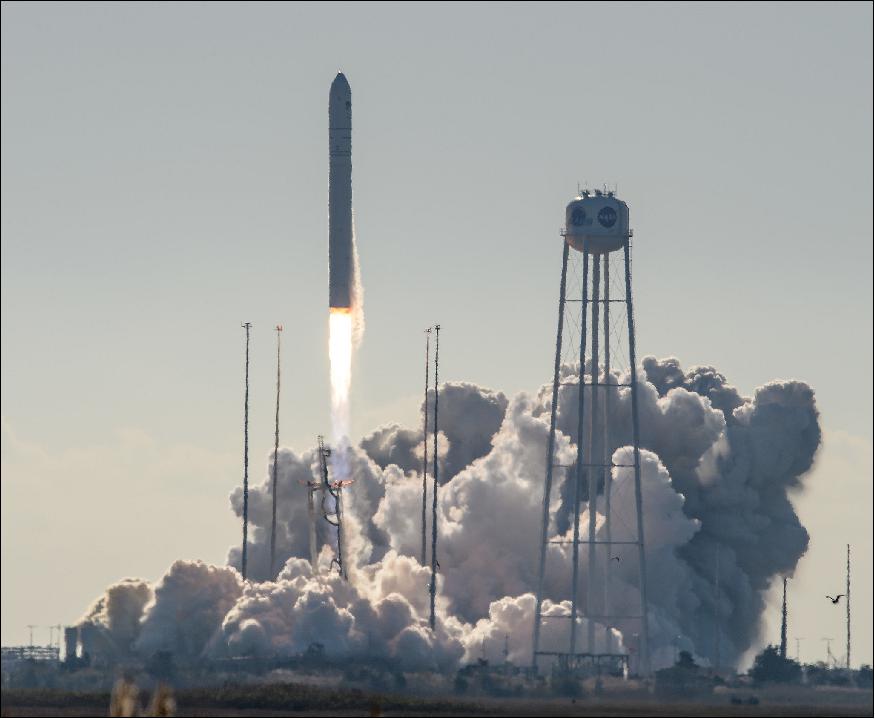
This delivery to the space station will support dozens of new and existing investigations. Here are some of the scientific investigations Cygnus is delivering to the space station:
• More Probing of Mysteries of the Universe: This mission carries components needed to prolong the operational life of Alpha Magnetic Spectrometer-02 (AMS-02). In a series of spacewalks planned in the coming weeks, astronauts will cut and reconnect fluid lines on the instrument, a feat not done before in space, which could prove valuable for future missions at NASA's upcoming lunar Gateway for the Artemis program or missions to Mars.
• Testing Personal Protective Equipment for Astronauts: The AstroRad Vest tests a special garment designed to protect astronauts from radiation caused by unpredictable solar particle events. Astronauts will provide input on the garment as they wear it while performing daily tasks. Use of the vest could protect crew members on missions to the Moon and Mars.
• Food Fresh from the Oven: The Zero-G Oven examines heat transfer properties and the process of baking food in microgravity. It uses an oven designed specifically for use aboard the space station, and may have application on future long-duration missions by offering a way to increase variety in flavor and nutrition of food for crew members.
• 3D Printing with Recycled Materials: The Made in Space Recycler will test systems needed to reprocess plastic into 3D printing filament that can then be transferred for use to the Made in Space Manufacturing Device, a 3D printer that has operated on the orbiting laboratory since 2016. This has implications for space conservation and deep space missions.
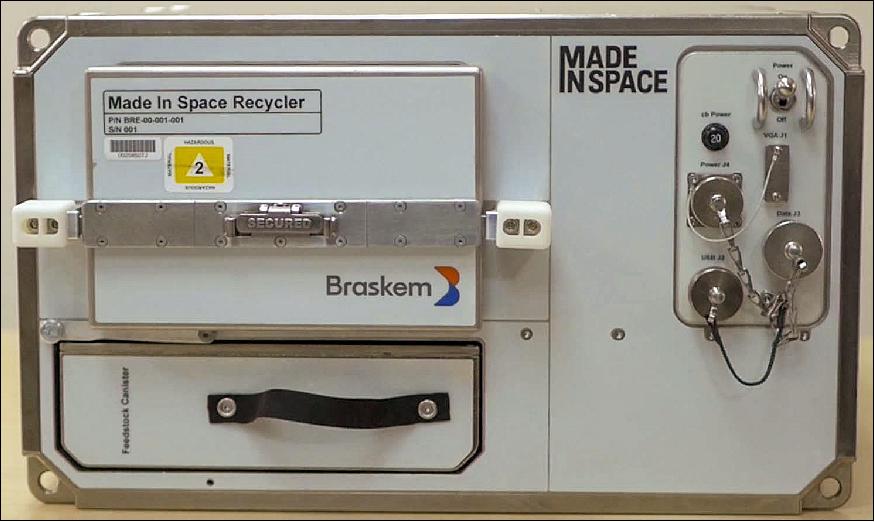
These are just a few of the hundreds of investigations currently happening aboard the orbiting laboratory in the areas of biology and biotechnology, physical science, and Earth and space science. Advances in these areas will help to keep astronauts healthy during long-duration space travel and demonstrate technologies for future human and robotic exploration beyond low-Earth orbit to the Moon and Mars.
Critical Cargo on PCM
"Space Station Cygnus special," ESA / Science & Exploration / Human and Robotic Exploration, 29 October 2019 3)
1) METERON-Analog-1 (METERON - Multi-Purpose End To End Robotics Operations Network – ANALOG-1) Investigation: The Analog-1 experiment will see ESA astronaut Luca Parmitano command a robot in the Netherlands from the International Space Station and Cygnus will be deliver the force-feedback joystick he needs to feel what the robot feels from a distance. Other accessories for this operation include the mounts to attach the joystick to the European space lab Columbus, as well as power and USB cables. Luca has already updated the software on a laptop to be used for the experiment. The METERON project is a European initiative to help prepare for future human-robotic exploration missions to the Moon, Mars, and other celestial bodies.
2) Other ESA items in Cygnus include a software upgrade on a USB-stick for boiling experiment Rubi, filters and items for the next-generation Life Support Rack, and water valves for the Columbus laboratory.
3) Hardware for the dark matter hunter: Cygnus will send vital parts for the spacewalks planned to repair AMS-02 throughout November. The dark-matter hunter was launched in 2011 and recorded so far over 17 billion cosmic rays, particles and nuclei per year. Results from the particle physics detector are among the top five most-cited publications from International Space Station research.
The instrument was initially meant to run for only three years but has been so successful that its mission has been extended. However, three of the four cooling pumps have stopped functioning and will require multiple spacewalks to repair.
Luca Parmitano will take a leading role in the spacewalks with the first intended to determine just how and where to intervene, and what tools will be needed for the process.
4) End of an era for Vessel-ID: Last week marked the end of one of the longest running European technology demonstrations on board the International Space Station – Vessel-ID. Outside the Columbus laboratory the Vessel-ID antenna has receiving shipping signals since June 2010 to investigate the feasibility of monitoring global maritime traffic from 400 km overhead. ESA astronaut Luca Parmitano deactivated the experiment on Friday 25 October 2019.
All passenger ships, and other vessels above a certain weight, broadcast identification, position, course, speed, cargo and voyage information, to port authorities and coastguards who monitor vessel traffic. The system uses basic VHF radio signals with a range of around 74 km making it useful when communicating with ships near the coastline, but not as helpful in the open ocean.
The signals travel much farther upwards and the Space Station was identified as an ideal location to test a spaceborne receiver that could lead to the establishment of a global vessel identification system. This could benefit law enforcement, fishing control, border control and maritime safety.
The Vessel-ID experiment ran autonomously and even helped save the life of Norwegian Eirikur Johannsson in 2012 when the Hallgrimar fishing vessel was caught in violent weather and overturned in icy waters between Iceland and Norway. A successor to the Automatic Identification System is ready for launch on a cubesat next year.
"Space Station Cygnus special," ESA / Science & Exploration / Human and Robotic Exploration, 29 October 2019 3)
Seven CubeSat Missions on NG-12 Flight
All seven CubeSats were selected through NASA's CubeSat Launch Initiative (CSLI) and are a part of the 25th Educational Launch of Nanosatellites (ELaNa) mission. CSLI enables the launch of CubeSat projects designed, built and operated by students, teachers and faculty, as well as NASA Centers and nonprofit organizations. ELaNa missions provide launch and deployment opportunities and ride-shares to space for CubeSats selected through CSLI. Students are heavily involved in all aspects of the mission from developing, assembling, and testing payloads to working with NASA and the launch vehicle integration teams. The ELaNa CubeSats are held to rigorous standards similar to those adhered to by the primary spacecraft. 4)
Five of the CubeSats were developed through NASA's USIP (Undergraduate Student Instrument Project). "Through USIP, NASA offers real-world experiences, with the goal of developing students' competencies in science, technology, engineering and math (STEM), skills critical to building a STEM-literate workforce and achieving the nation's exploration goals," said Joyce Winterton, Wallops senior advisor for education and leadership development.
The 5 USIP CubeSats flying on Antares are:
• RadSat-U (Radiation Satellite), a 3U CubeSat demonstration mission of Montana State University, Bozeman, MT.
- RadSat-u is a technology demonstration mission of a radiation tolerant computer system that is resilient to faults caused by ionizing radiation. The computer technology employs a novel fault-mitigation strategy that uses redundant processing cores and real-time reconfiguration of the hardware to quickly recover from radiation-induced failures. The mission will test the addition of an error correction and synchronization strategy for the data memory of the computer. This mission will also verify that both the processor and memory system can operate reliably in the presence of ionizing radiation. RadSat-u is funded by the NASA Established Program to Stimulate Competitive Research and University Student Instrument Project.
• Phoenix, a 3U CubeSat of ASU (Arizona State University), Tempe, AZ.
- Phoenix is a technology demonstration mission to determine the effectiveness of nanosat platforms to conduct scientific investigations of urban environments. The Urban Heat Island Effect is a phenomenon in which the structure of the city causes a rise in surface temperature. It will use a thermal-IR imaging payload to study spatial and temporal changes in the heat properties of Phoenix, Arizona, as well as other U.S. cities. The imager is an off-the-shelf FLIR Tau 2 longwave infrared thermal camera. Phoenix is funded by the NASA University Student Instrument Project.
• SOCRATES (Signal of Opportunity Cubesat Ranging and Timing Experiments), a 3U CubeSat of the University of Minnesota, Minneapolis.
- SOCRATES is a technology demonstration mission to look at gamma ray photons from deep space. The Gamma Ray Incidence Detector (GRID) sensor being developed is a gamma-ray (and hard X-ray) detector optimized for making accurate positioning, navigation and timing (PNT) measurements. In operation, it will use signals of opportunity (e.g., naturally occurring gamma-ray emissions for sources such as GRBs (Gamma-Ray Bursts) as navigation and timing beacons akin to GPS satellites. It will advance the technology readiness level (TRL) of the sensor from 5 to 7. SOCRATES is funded by the NASA University Student Instrument Project.
• HuskySat, a 3U CubeSat technology demonstration mission (plasma propulsion) of the University of Washington, Seattle, WA.
- HuskySat is to test a pulsed plasma electric propulsion system and a high-frequency K-band communication system. It will fly a newly developed Amateur Radio Linear Transceiver and a purchased UHF/VHF antenna system, but is otherwise an entirely student-designed and built 3U CubeSat, including a camera board developed by local Raisbeck Aviation High School. The project fosters interdisciplinary student participation in space systems research to inspire and train future space scientists. HuskySat-1 is funded by the NASA University Student Instrument Project.
• SwampSat II, a 3U CubeSat technology demonstration mission of the University of Florida, Gainesville, FL.
- SwampSat II is to test a boom and antenna spooling and deployment mechanism to support a matched very low frequency (VLF, 3-30 kHz) antenna receiver pair. It will experimentally quantify VLF electromagnetic wave propagation through the lower ionosphere in order to clarify the role of VLF whistler-mode waves in controlling the energetic particle populations of the Earth's radiation belts. SwampSat II is funded by NASA's Undergraduate Student Instrument Project.
The additional two CubeSats flying through CSLI are:
• Argus-02, a 2U CubeSat (2.5 kg) of St. Louis University, Missouri.
- Argus is a scientific investigation mission is to improve the ability to model the effects of space radiation on modern electronics. The payload is an array of radiation-effects modeling experiments where on-orbit event rates will be compared against ground predictions to help calibrate new predictive models developed at the Institute for Space and Defense Electronics. Argus leverages commercial off-the-shelf CubeSat systems and extremely simple payload requirements to enable a short-turnaround mission.
• HARP (Hyper Angular Rainbow Polarimeter), a 3U CubeSat of the University of Maryland, Baltimore County, Maryland and USU (Utah State University ), Logan, Utah.
- HARP is a scientific investigation mission designed to measure the microphysical properties of atmospheric aerosols, cloud water and ice particles. It is a precursor for a new generation of imaging polarimeters to be used for the detailed measurements of aerosol and cloud properties in larger missions. The wide field-of-view (FOV) imager splits three spatially identical images into three independent polarizer and detector arrays. This technique achieves simultaneous imagery of the three polarization states and is the key innovation to achieve a high polarimetric accuracy with no moving parts. HARP is funded by the NASA Earth Science Technology Office.
• November 13, 2019: According to Satnews Daily, two NRO (National Reconnaissance Office) research and development CubeSats were successfully launched in addition to the seven CubeSats via rideshare aboard the Antares rocket as part of the Northrop Grumman-12 (NG-12) Cygnus cargo resupply mission from NASA Wallops Space Flight Facility, Wallops Island, Virginia, on November 2, 2019. 5) 6)
- Led by NRO's Advanced Systems and Technology (AS&T) directorate, the two CubeSats are part of the NRO's IMPACT project – an R&D effort to provide early evaluation of new technologies in space.
- Manifested as AeroCube 14, the two, 3U IMPACT CubeSats launched use the Aerospace Corporation's AeroCube for bus and integration support and host 14 technology demonstrations that range from new materials, such as structural materials and thermal straps, to solar cells, star tracker experiments and on-board processors.
- These smallsats will first travel to the International Space Station (ISS) as part of the cargo resupply and will deploy in about two months from the ISS to their final orbit.
- To assist with the NRO's research and development goal of rapid technology infusion, the IMPACT program offers a regular launch cadence for technology demonstrations; provides an adaptable bus that enables easy onboarding and off-boarding of those technologies, and serves as the front end of the technology for NRO future capabilities.
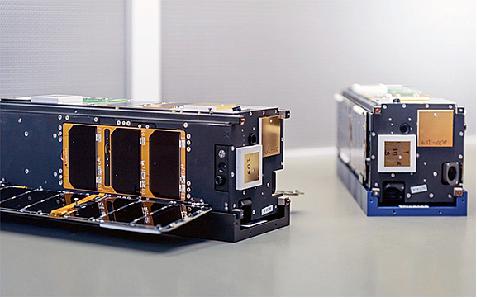
- Four of the experiments that were launched are also part of NRO's new Greenlighting program, which leverages and evaluates the performance and space survivability of new technologies developed by non-traditional commercial partners in a streamlined fashion on a rapid timeline.
- The unclassified Greenlighting program focuses on technology development, not satellite development, by giving vendors supporting NRO's mission goals the ability to focus on maturation of technologies without having to worry about the logistics of getting to space.
- By using a standard circuit board interface on which to host small module technology experiments, the Greenlighting program drives miniaturization of technologies and keeps costs low — all while giving these projects access to space testing that might not be available through traditional means.
- Dr. Susan Durham, Director, AS&T, said that with IMPACT, the goal is to take the pioneering research areas being explored to test their survivability and performance in space. The launch of the IMPACT cubesats along with the NRO's new Greenlighting program represents the best of the agency's collaboration with commercial research and launch partners.
Figure 4: The NRO IMPACT program is a research and development effort led by NRO's Advanced Systems and Technology Directorate (video credit: NRO)
Mission Status
• January 31, 2020: Northrup Grumman's Cygnus cargo spacecraft (named S.S. Alan Bean) departed the International Space Station's at 9:36 a.m. EST after Expedition 61 Flight Engineers Andrew Morgan and Jessica Meir of NASA commanded its release from the Canadarm2 robotic arm. At the time of release, the station was flying about 250 miles over the South Pacific just off the West Coast of Chile. 7)
- For this mission, Cygnus demonstrated a new release position for departure operations and incorporated the first ground-controlled release. The new orientation allowed for easier drift away from the station's Canadarm2 robotic arm.
- Within 24 hours, Cygnus will begin its secondary mission deploying a series of payloads into a higher orbit. The departing spacecraft will move a safe distance away from the space station before deploying a series of CubeSats: HuskySat-1 (University of Washington), SwampSat II (University of Florida), EdgeCube (Sonoma State University), and CIRis (Utah State University). The two NRO CubeSats (AeroCube-14) will also be deployed into a higher orbit.
- In addition, Cygnus NG-12 spacecraft will release the VPM (Very Low Frequency Propagation Mapper) of AFRL (Ref. 8) into a higher orbit.
- Northrop Grumman flight controllers in Dulles, Virginia, will initiate its deorbit and execute a safe, destructive reentry into Earth's atmosphere at the end of February.
- Once the Cygnus capsule completes its secondary mission, it will burn up in the atmosphere along with 2,600 kg of disposable cargo, or trash, that the crew of Expedition 61 packed inside.
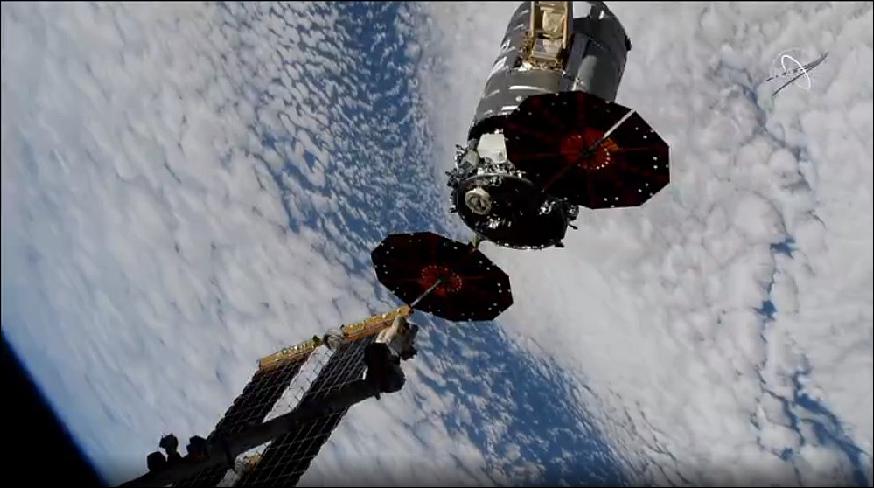
• January 29, 2020: VPM (Very Low Frequency Propagation Mapper) of AFRL (Air Force Research Lab) was launched on a SpaceX resupply mission to the International Space Station in Dec. 5, 2019 from Cape Canaveral, Florida. The primary goal for VPM will be to gather important data to better understand the effectiveness of its partner, DSX (Demonstration and Experiments Satellite), which has been on orbit conducting basic research on the effects of particles in the Van Allen Radiation Belt. 8)
- VPM has been onboard the ISS waiting for release by NASA astronauts, who will install it onto the Cygnus resupply spacecraft, which will depart and release the satellite, sending it onto the next stage of its mission.
- "Once the Cygnus resupply vehicle departs the ISS, it will boost to a higher orbit," said Capt. Stephen Tullino, Deputy Program Manager of AFRL's Small Satellite Portfolio. "It will take roughly one day to get into position to deploy, and we will attempt our first listen for DSX's signal, two to four weeks after deployment."
- The AFRL satellite's overall mission is to collect data on the DSX satellite that the Air Force launched in June 2019.
- "VPM will operate in orbit for one year," Tullino said. "The spacecraft is expected to de-orbit from space somewhere between two to 15 years, after deployment."
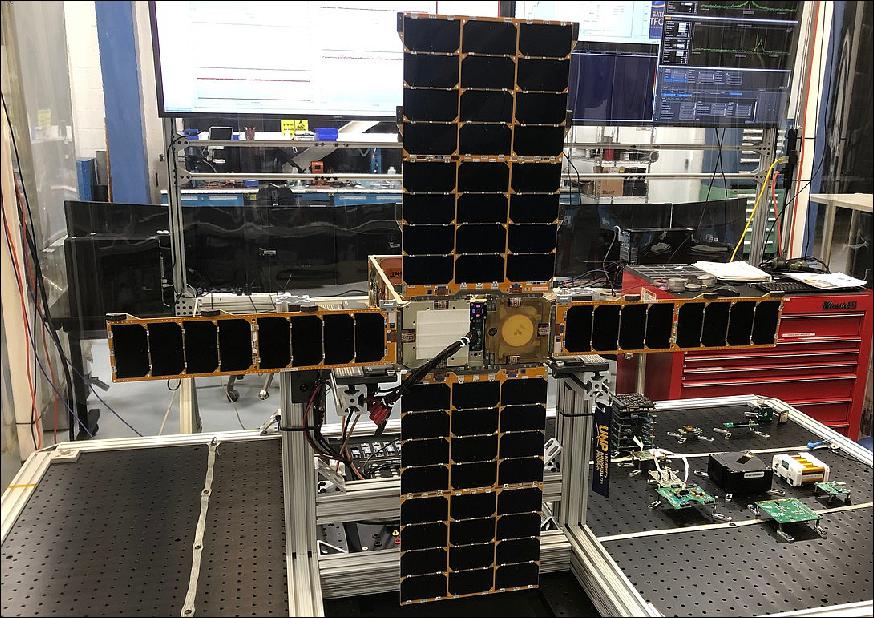
• November 7, 2019: Two astronauts will venture outside the International Space Station for a series of complex spacewalks this month and next to repair the Alpha Magnetic Spectrometer (AMS), a cosmic ray detector. 9)
- At least four spacewalks currently are planned before the end of this year, the first of which will be conducted Friday, Nov. 15. Dates for the other spacewalks are under review and will be scheduled in the near future.
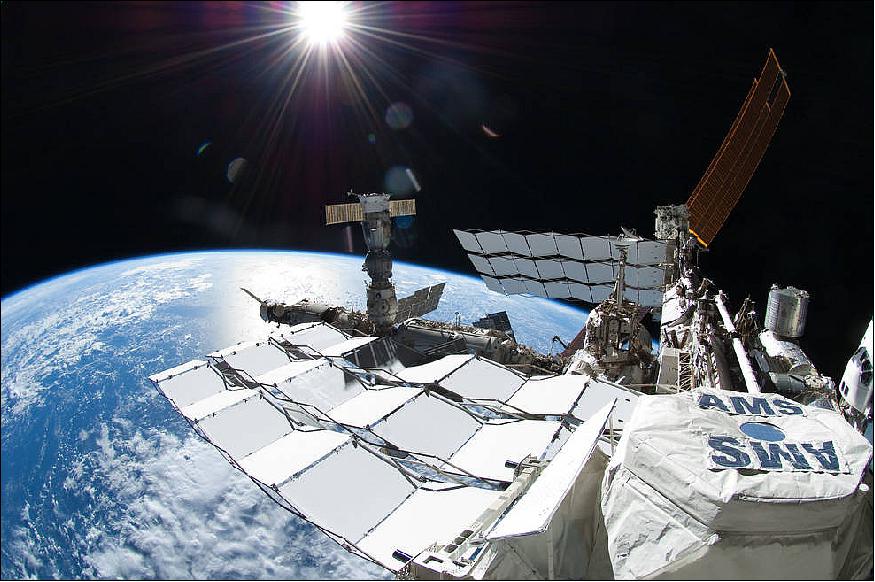
• November 6, 2019: A new U.S. resupply ship is open for business and the Expedition 61 crew has begun unloading over four tons of new science experiments and station hardware. 10)
- Two astronauts are also studying advanced repair techniques for a cosmic particle detector attached the International Space Station.
- The astronauts opened the hatches on Northrop Grumman's Cygnus resupply ship after its arrival on Monday and immediately started unpacking and activating critical science payloads. Mice delivered aboard Cygnus are now living in station habitats to help scientists understand how microgravity impacts metabolic rates. The rodent study may provide therapeutic insights into Earth-bound ailments such as diabetes and liver disease.
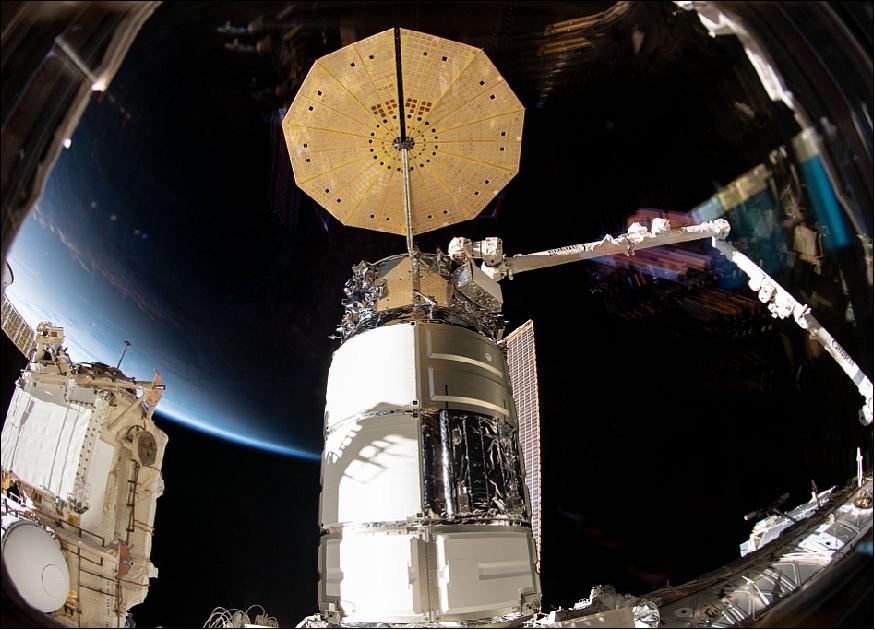
- Cygnus science freezers containing valuable research samples for observation are now operating inside station research racks. The crew will utilize the samples to study a variety of microgravity phenomena to benefit Earthlings and astronauts. New experiments will research how microbes affect space hardware and astronauts and explore how weightlessness affects muscle gene expression.
- Cygnus also delivered hardware to enable the complex repair job required to upgrade the AMS-2 (Alpha Magnetic Spectrometer-2's ) thermal control system. Astronauts Luca Parmitano and Andrew Morgan are preparing for several spacewalks to cut and reconnect fluid lines to ensure the AMS continues its search for dark matter and antimatter for years to come.
- Cosmonauts Alexander Skvortsov and Oleg Skripochka logged their meals and medicine intake today to help researchers understand how space impacts bone tissue. The duo worked on a variety of Russian maintenance tasks then reviewed Cygnus emergency procedures with the rest of their Expedition 61 crewmates.
• After its capture on 4 November 2019 at 4:10 a.m. EST, the Northrop Grumman Cygnus spacecraft was bolted into place on the International Space Station's Earth-facing port of the Unity module at 6:21 a.m. At the time of installation, Cygnus was flying over the south Pacific. 11)
- This mission, designated NG CRS-12, will be in orbit at the same time as its predecessor, the NG CRS-11 Cygnus spacecraft, which launched in April on an extended duration flight. The NG CRS-12 Cygnus spacecraft will remain at the space station until January before it disposes of several thousand pounds of trash through its fiery reentry into Earth's atmosphere. The ability to fly two vehicles at once further demonstrates the robustness of Cygnus to support the goals of NASA's ambitious missions.
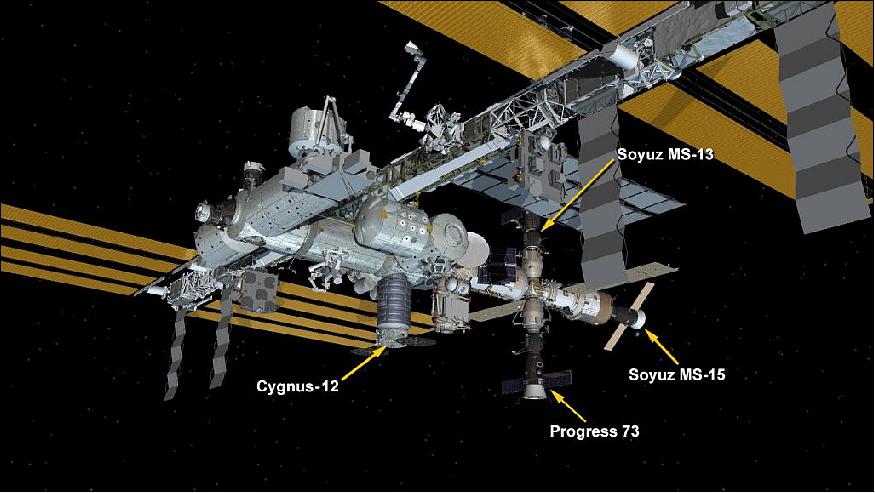
• On November 4, 2019, NASA astronaut Jessica Meir took control of the International Space Station's Canadian-built robot arm to capture the NG-12 (Northrop Grumman-12) Cygnus supply ship carrying crew provisions, spacewalking gear to repair an aging particle physics experiment, tech demo satellites for the U.S. military, and an oven to bake the first cookies in space. 12)
- The automated cargo freighter arrived at the space station Monday, using GPS and laser-guided navigation to fine-tune its rendezvous along an approach corridor below the research complex. The Cygnus spacecraft held its position less than about 12 meters, below the station for Meir to command the robotic arm to capture the supply ship at 4:10 a.m. EST (09:10 GMT) Monday, 4 November.
- Engineers in mission control were expected to take over commanding of the robot arm to berth the Cygnus spacecraft to the station's Unity module a few hours later, setting the stage for astronauts to open hatches leading to the pressurized cargo carrier to begin unpacking the supplies inside.
- The equipment inside the Cygnus cargo freighter's Italian-made PCM (Pressurized Cargo Module) include tools and replacement hardware for an upcoming repair of the Alpha Magnetic Spectrometer.
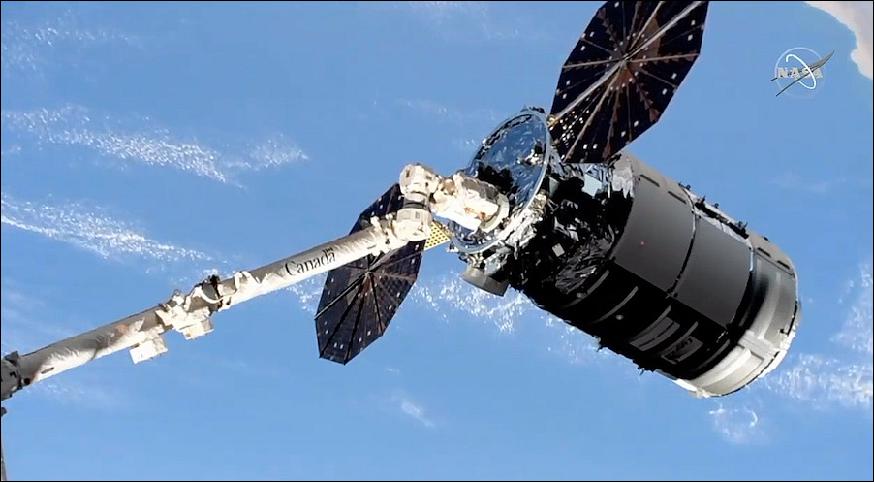
References
1) "NASA Science, Cargo Heads to Space Station on Northrop Grumman Mission," NASA Press Release 19-087, 2 November 2019, URL: https://www.nasa.gov/press-release/nasa-science-cargo-heads-to-space-station-on-northrop-grumman-mission
2) "'To Do List' as Cygnus Spacecraft Sails to Space Station with a Multitude of Experiments," Satnews Daily, 3 November 2019, URL: http://www.satnews.com/story.php?number=1664612281
3) http://www.esa.int/Science_Exploration/Human_and_Robotic_Exploration/Space_Station_Cygnus_special
4) "Seven Student-Made CubeSats Set To Fly Aboard Antares Nov. 2 from Wallops," NASA, 31 October 2019, URL: https://www.nasa.gov/wallops/2019/feature/seven-student-made-cubesats-set-to-fly-aboard-antares-nov-2-from-wallops
5) "NRO's Smallsats Launched," Satnews Daily, 13 November 2019, URL: http://www.satnews.com/story.php?number=1793067838
6) "NRO launches two IMPACT small satellites as rideshare on NG-12," 2 November 2019, URL: https://www.nro.gov/News/News-Articles/Article/2006799/nro-launches-two-impact-small-satellites-as-rideshare-on-ng-12/
7) Mark Garcia, "U.S. Cygnus Space Freighter Departs Station After 88 Days," NASA Space Station, 31 January 2020, URL: https://blogs.nasa.gov/spacestation/2020/01/31/u-s-cygnus-space-freighter-departs-station-after-88-days/
8) Santana Ortiz, "Air Force Research Laboratory satellite departing International Space Station," AFRL News, 29 January 2020, URL: https://www.kirtland.af.mil/News/Article-Display/Article/2068918/air-force-research-laboratory-satellite-departing-international-space-station/
9) "NASA TV Coverage Set for Complex Spacewalks, Briefings," NASA Press Release, 7 November 2019, URL: https://www.nasa.gov/press-release/nasa-tv-coverage-set-for-complex-spacewalks-briefings
10) "NASA Space Station On-Orbit Status 5 November 2019 - Unloading Cargo," SpaceRef, 6 November 2019, URL: http://spaceref.com/international-space-station/nasa-space-station-on-orbit-status-5-november-2019---unloading-cargo.html
11) Mark Garcia, "Cygnus Resupply Ship Attached to Unity for Cargo Operations," NASA Space Station, 4 November 2019, URL: https://blogs.nasa.gov/spacestation/2019/11/04/cygnus-resupply-ship-attached-to-unity-for-cargo-operations/
12) Stephen Clark, "Space station receives spacewalking gear, new baking oven," Spaceflight Now, 4 November 2019, URL: https://spaceflightnow.com/2019/11/04/space-station-receives-spacewalking-gear-new-baking-oven/
The information compiled and edited in this article was provided by Herbert J. Kramer from his documentation of: "Observation of the Earth and Its Environment: Survey of Missions and Sensors" (Springer Verlag) as well as many other sources after the publication of the 4th edition in 2002. - Comments and corrections to this article are always welcome for further updates (eoportal@symbios.space).